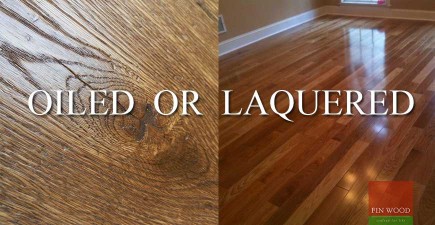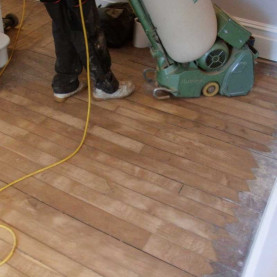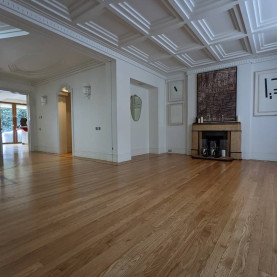Prefinished Hardwood Flooring vs Unfinished
Which is the better hardwood flooring option for you? A pre-finished floor or an unfinished/finished on site hardwood floor?
If you're deciding between prefinished or unfinished wood flooring, consider the pros and cons of each option before making your final choice.
All wooden floors need to be sealed, finished, to extend their lifespan and to keep them looking wonderful.
Without finish, oil or lacquer, the wood grains are totally exposed to dirt and liquids thus they will stain and get dirty from the first touch.
Since the question isn't "sealed or unsealed floors?" then the decision is how to have them sealed.
And there are mainly two options.
Prefinished
This means that after the manufacturing process of the board - cutting, planing, routing and sanding - in the factory is applied the finish which can be oile or lacquer.
Back in the days this method was not available and all the hardwood flooring was always supplied unsealed, unfinished.
Why the change? With the development of the industry and constant growing demand manufacturers changed their approach.
Advantages:
- - Highly durable as instant UV curing is used in factory (compared with in situ finishing)
- - Sanding, staining and the clear coating are done along the grains thus no marks or imperfections thus a consistent quality of finish
- - During the work you skip all the smells that go along with sanding and finishing.
- - Shorter time needed to deliver the completed project, thus saving the budget
- - Once the floor is installed you can walk on it and the furniture can be placed in
Cons:
- - Because each board or block is finished individually a small variation in colour tone may be noticeable from one piece to another
- - Borders, inlays, and other design features are difficult if not impossible because of the sanding that's normally required.
- - Because the boards or blocks are milled individually, a minor variation in height may result therefore the edges are bevelled to avoid sharp sides. This creates "micro-grooves" between boards which in time may accumulate dirt.
Unfinished, Site-Finished, Finished in situ
Advantages:
- - A very wide range to choose and combine from colours and type finishes including the light reflection level
- - To enjoy some special dimensions or certain species this is the only alternative to seal the floor
- - Inlays, custom patterns, border treatments and most of the design features are much easier to integrate
- - The end result is a smooth surface with no detectable high or low points between the boards or blocks as you run your hand across the floor. There are no grooves as with pre-finished floors.
Cons:
- - The finish is not as hard wearing or smooth as that of a prefinished floor. Also, because of the resulted airborne dust that settles on the floor while the finish is drying tiny "rough" spots will remain. These will completely, or almost, disappear within a few months as the floor is walked on.
- - As the sanding is done multidirectional compared to longitudinal only for prefinished floors, fine sanding scratches will still be visible through the finish. If finer grits are used with to wipe these traces the stain and/or finishing coat may not turn into the aimed result
- - On hard accessible surface a small variation in tone may be noticeable compared with the rest of the floor
- - We use the latest equipment available among others to minimise the resulted dust from the sanding process, yet a small amount will escape uncontained
- - Some type of finishes create a powerful odor which can linger for several days. The odor is strongest the first two days.
- - The whole project duration will extend
- - Access over the floor will be restricted while the finish dries which may mean even a few days. Heavy furniture should not be put back in place for 48-72 hours.
We hope we managed to provide an extended information and now you can take the right decision. If you have any comments or would like to know even more drop us a few lines.















